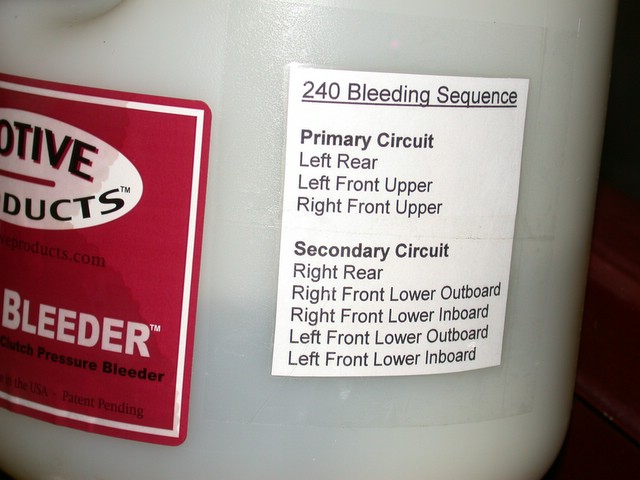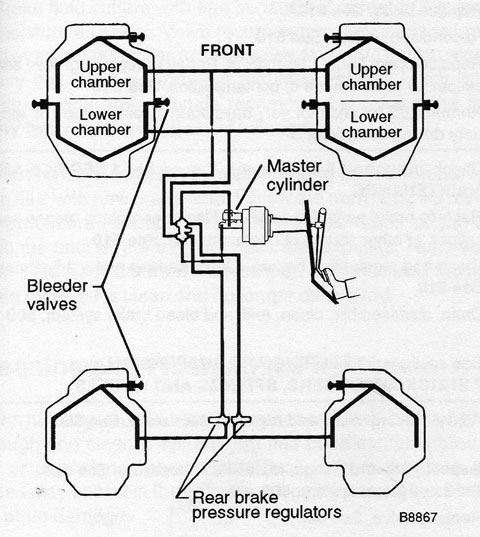|
I had assistant press the brake pedal and hold it, I opened the bleeder valve, then closed it, then had assistant release the brake pedal. I did this several times for each bleeder valve, refilling the brake fluid reservoir to the top each time. The brake pedal engages halfway, which is the only problem right now, ie no sponginess or sinking to the floor. There are no leaks of brake fluid and the front wheels spin when raised. Just to be clear, I only want the pedal engagement to be higher and, given the amount of brake pad left on all brakes, should have it engaging higher.
I have #2 brake configuration per the plates/tags on the car, meaning Girling front and ATE rear calpiers. I'm familiar with those and the calipers look like Girling in the front and ATE in the rear.
I've used speed bleeders in the past on my Toyotas with success, because I don't like having to rely on an assistant. However, my Toyota speed bleeders don't fit the Girling or ATE calipers. What brand/part number of speed bleeders would work?
Thanks
|




